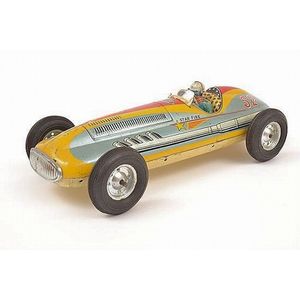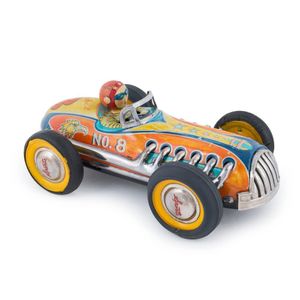Yonezawa Rocket Racer Friction Toy, Circa 1950
You must be a subscriber, and be logged in to view price and dealer details.
Subscribe Now to view actual auction price for this item
When you subscribe, you have the option of setting the currency in which to display prices to $Au, $US, $NZ or Stg.
- Friction Motors in Toys - A friction motor, also known as a push and go is a type of motor that uses friction to create motion. It is commonly found in toys, particularly in vehicles such as cars and trains. The motor works by using a spring-loaded mechanism that is activated when the toy is pushed or pulled along a flat surface. The movement of the toy causes the friction between the wheels and the surface to turn the gears inside the motor, which then propels the toy forward.
Friction motors are known for their simplicity and low cost, making them a popular choice for children's toys. They are also easy to use, as they do not require any batteries or electrical power to operate.
However, there are some drawbacks to friction motors. They can wear out over time, especially if the toy is used frequently. They also have limited speed and power, and the motion can be affected by the surface on which the toy is used. - Circa - A Latin term meaning 'about', often used in the antique trade to give an approximate date for the piece, usually considered to be five years on either side of the circa year. Thus, circa 1900 means the piece was made about 1900, probably between 1895 and 1905. The expression is sometimes abbreviated to c.1900.
This item has been included into following indexes:
Visually similar items

Marusan (Japan) tinplate star fire model, circa 1950s, unboxed (F-G)

Captain Campbell's blue bird (short version), Gunthermann brand, German tinplate clockwork racing car in teal blue with powerful mechanism, tin balloon wheels and working brake in good plus original condition, c. 1930s. Length 32 cm. Provenance: Bryan Jack

Wells (England) streamlined clockwork race car with key, c.1930's (G - VG)

An Asahi X-5 Robot Space Patrol
